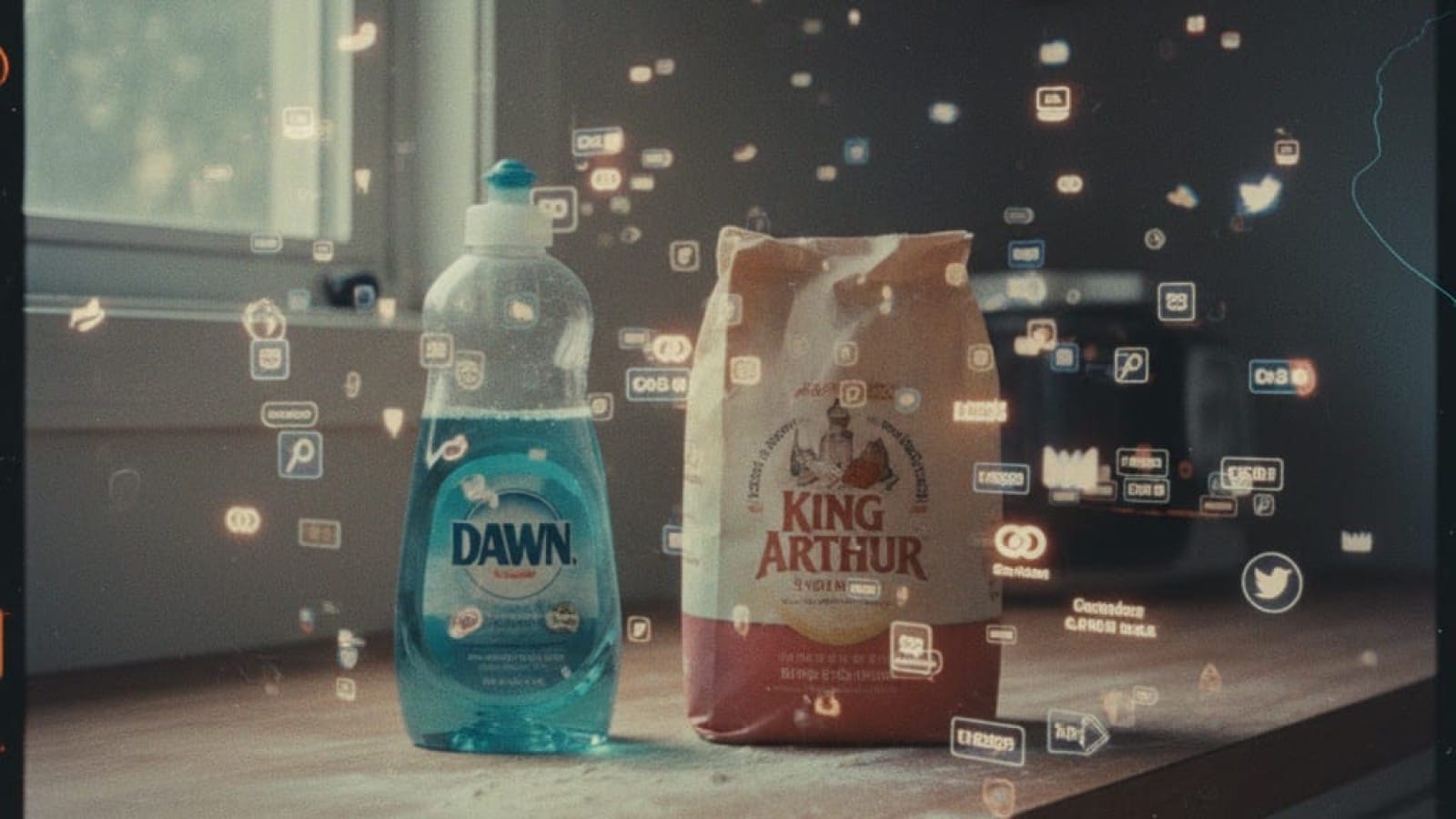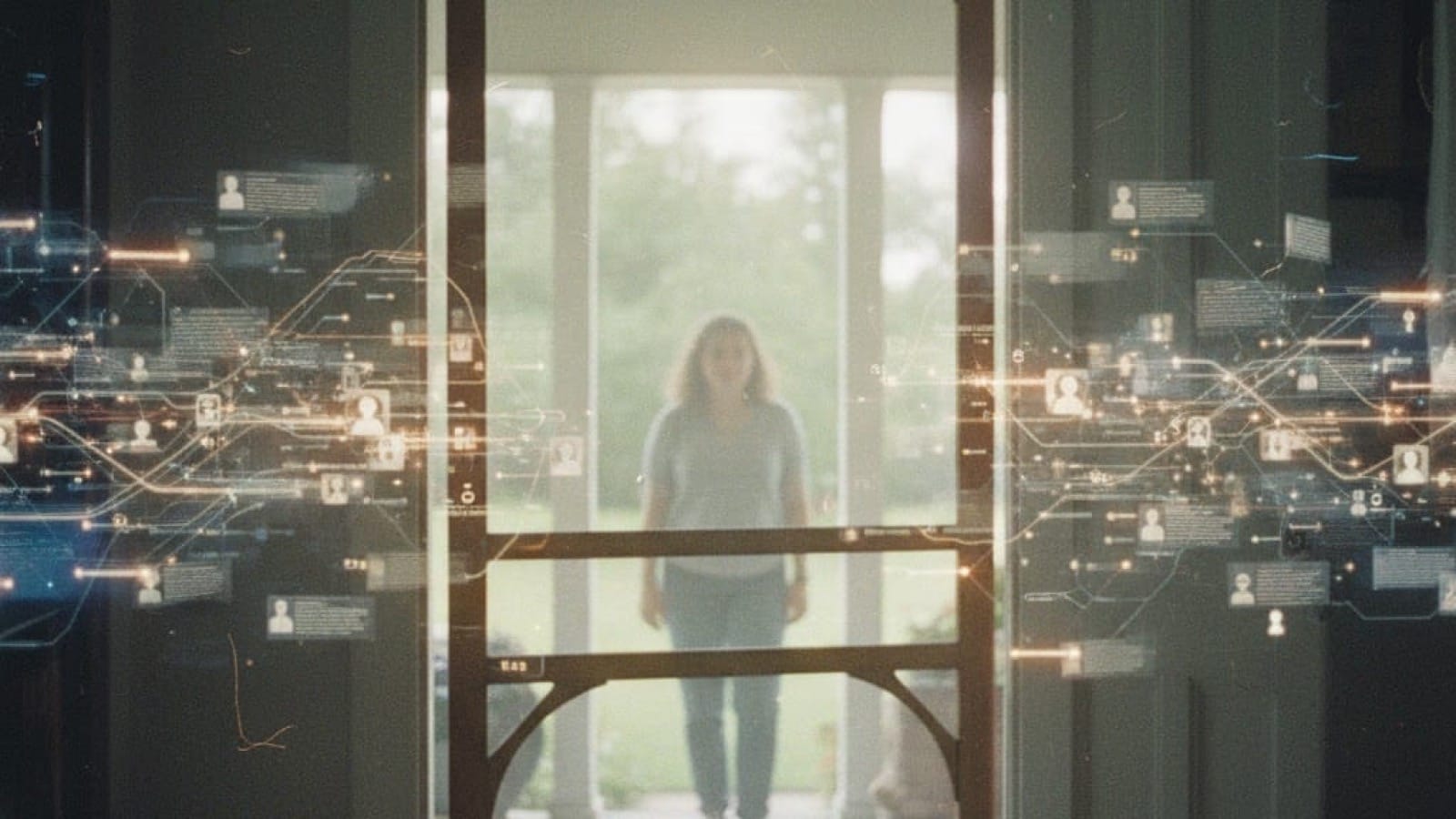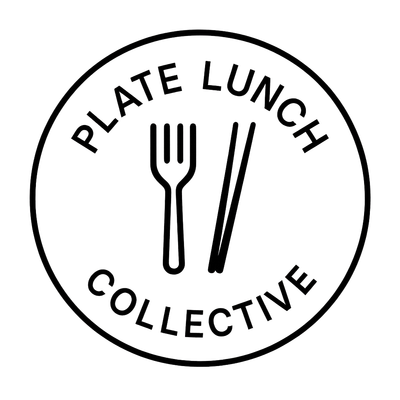Loyalty Slithered: What AI Teaches Us About Trust, Reciprocity, and the Brands That Keep Their Promises

Loyalty slithered through my childhood, changing shape in every room of the house.
My grandfather was a union grocery worker at Williams Bros on the central coast of California. He gave them decades. They gave him a pension until Vons bought the chain in 1992 and the promises evaporated. I never learned exactly what happened to his retirement. I was afraid to ask.
My grandmother switched from Old Gold cigarettes to Marlboro Lights when the packaging changed, but never wavered on Dawn dish soap or King Arthur flour. Some brand loyalties were negotiable. Others were doctrine.
We learned by watching. Then we learned by performing.
In kindergarten, we were already sorting each other out. Who wore real Vans Off the Wall and who had knockoffs from Kinney's.
Sports fans stayed loyal to their teams for decades, through losing seasons and ownership changes. That kind of devotion seemed almost sacred.
And then there was family loyalty, the deepest kind. The unquestionable kind. When someone violated it, that became the plot of novels and movies. It was the line you didn't cross.
But somewhere between my grandfather's pink slip and my first job offer, the rules changed.
The Pattern Nobody Wanted to See
The numbers keep sliding. About sixty-eight percent of consumers say they're loyal to certain brands, down from seventy-seven just three years ago. Same period, only twenty-three percent of employees say they're engaged at work. Different surveys, same story.
My grandfather's generation was taught loyalty as a virtue. Company man. Brand devotee. Stay put, work hard, trust the system. The system broke faith first. My grandfather kept showing up for a while anyway. Pensions evaporated. Brands got acquired and quality slipped. Employers laid people off to boost quarterly numbers while preaching family values at all-hands meetings.
We watched our parents get laid off after decades of service. Watched pensions turn to dust. The lesson wasn't subtle. Loyalty turned into something you give cautiously, withdraw quickly. Never assume it'll be returned.
Younger generations never had the option to believe. They entered the workforce after 2008. Watched companies collapse. Watched their parents lose homes. Accenture calls it "living for now."
The details change, but the pull feels the same.
You're not really up against other brands. You're up against the quiet assumption that loyalty is for suckers. The work isn't to out-promise rivals. It's to prove promise still means anything.
My grandmother's brand switches teach us something useful. She moved from Old Gold to Marlboro Lights over packaging. Trivial. But Dawn and King Arthur? Those survived decades because they never broke faith on the functional promise. The soap cut grease. The flour rose consistently. She could be capricious about cigarettes because the stakes were low. But in categories where failure meant a ruined dinner or greasy dishes, consistency compounded into doctrine.
Loyalty to Velocity
Something new showed up in the SAP Emarsys data last year. They're calling it Trend Loyalty.
Fourteen percent of consumers now exhibit what researchers describe as short-lived, opportunistic loyalty driven by social influence and viral appeal. Fifteen percent buy products purely because they're trending on TikTok. The same percentage admit they've bought things they didn't even need just because everyone was talking about them. Twenty-nine percent quickly lose interest after products stop trending, even if they were obsessed at first.
This isn't fickleness. It's loyalty to something else. Not the brand. The conversation. The hum of relevance that proves you're still seen.
The kindergarten Vans versus Kinney's divide taught us this early. Brand loyalty at age five wasn't about product quality. We couldn't evaluate stitching or sole durability. It was about visible signals of belonging. The shoes were just the medium for the message: I have access. I'm part of the group that matters.
We've always chased what's popular. The difference is speed. The chase used to take years. Now it happens before lunch. It's hard to remember what patience even felt like.
Before platforms, trends moved through social networks slowly. Word of mouth took time. Geography constrained spread. A product could dominate a local market without needing to dominate everywhere at once. You could build loyalty through repeated exposure within a community. Consistency had time to compound.
Now a product goes viral because the system learns that this kind of thing keeps people staring at their screens. So it shows it to millions at once. They react. The system learns faster. The loop tightens.
Loyalty used to compound like interest. Small deposits over time adding up to something substantial. Each positive interaction increased the likelihood of the next. You could be mediocre on any individual transaction as long as the average held. As long as you showed up consistently.
It doesn't reward consistency. It rewards detonation. The thing that makes people stop scrolling right now. Every interaction resets to zero. Last week's viral moment means nothing if this week you're quiet.
Consistency's a river cutting stone. The algorithm doesn't wait for rivers; it wants flash floods.
Kelton Global found that 25% of consumers have never felt loyal to any brand at all. A quarter of the market walks in assuming betrayal. Another 44% would "cheat on their favorite brand" for a 20% discount.
Marketers see Trend Loyalty as something to capture. A wave to ride. Build hype, go viral, convert while attention is hot.
That's backwards. Trend Loyalty isn't a customer acquisition strategy. It's a diagnosis. The 14% who exhibit pure Trend Loyalty aren't your target. They're everyone else's warning system. They're showing you what happens when brands optimize for algorithmic intensity instead of human consistency.
Bain calls it something else. Loyalty isn't dying. It's fragmenting. People are still loyal, just conditionally. They'll commit until something better comes along, which it always does, because the friction of switching keeps dropping and the algorithm keeps serving alternatives.
Most teams ask, "How do we capitalize on trends?" The better question is quieter: "What would make someone stay after the trend passes?" Not smarter subject lines. A promise worth hanging around for.
The Creepiness Threshold
My grandmother never wondered how Dawn knew she needed dish soap. She bought it at the store. The store stocked it because people bought it. The relationship was transactional but transparent.
Now brands know when you're running low before you do. They can predict what you'll want next based on what people like you wanted before. They can serve you an ad for winter boots the week before you start searching for winter boots, and you'll never know if you wanted the boots first or if the ad made you want them.
Research published in the Journal of Consumer Research found that too much personalization can actually decrease loyalty. There's a threshold where helpful becomes creepy.
The threshold isn't consistent across people or categories. Someone might love that Netflix knows exactly what they want to watch next but feel violated that a retailer knows they're pregnant before they've told anyone.
Netflix shows its work. "Because you watched X, you might like Y." The logic is visible. You can agree or disagree.
Target famously predicted a teenager's pregnancy based on purchase patterns and sent her coupons for maternity clothes before she'd told her family. The inference was correct. The revelation was invasive.
Transparency buys what trust alone can't. People don't mind being known. They mind being watched. Netflix explains its recommendations. Target didn't explain the pregnancy prediction. One builds trust. The other breaks it.

The Reciprocity Engine
Ipsos tracks global trust in institutions. The data is bleak. Trust in brands, employers, governments, media, all declining simultaneously. Fifty-three percent of people say most brands don't care about them.
Not "I'm not sure if they care." Not "They could care more." They don't care about me. That's the baseline assumption.
AI can't fake intimacy well enough to matter. Maybe that's a good thing. What it can do is notice patterns of care and act on them, over and over, for more people than any human could.
My grandfather's loyalty to Williams Bros wasn't irrational. The company knew him. His manager knew his kids' names. When he needed time off for a family emergency, they worked with him. When the company needed someone to cover a shift, he showed up. The relationship was reciprocal. Both parties adjusted to meet each other's needs.
That model doesn't scale. You can't have personal relationships with millions of customers.
AI makes reciprocity possible for more than a handful of people. Whether anyone chooses to use it that way is a different story.
You can see it when a customer orders from your e-commerce site every few months. The intervals are irregular but the purchase is usually the same category. Your system notices that the time between purchases is getting shorter. Could be a good sign. Increased engagement. Could be a problem. Product not lasting as long as it should.
The default move is to chase the sale. Send a discount to encourage faster reorder. Take the money while the window is open.
A reciprocal approach asks a different question: "Is this what the customer actually needs?"
Patagonia repairs the jacket instead of selling you a new one. Costs them money. Earns something harder to measure.
AI makes that possible if you're willing to trade a little efficiency for a little faith.
A customer clicks on your marketing email occasionally but rarely buys. The usual interpretation is moderate engagement. Keep sending. Maybe increase frequency. Hold their attention while you have it.
A reciprocal system asks: "What is this person actually getting from these emails?"
Maybe they're researching. Clicking to learn, not to buy. In which case, the only thing you're really giving them is information. You teach them something. They remember you when they're ready to purchase.
Or maybe they're clicking out of habit or boredom or because the subject line was compelling but the offer wasn't relevant. In which case, you're burning goodwill with every send.
Deloitte's research found that 73% of consumers prioritize value over brand preference now. That sounds like bad news for loyalty. It's actually an opportunity.
Value doesn't just mean price. It means the relationship gives back more than it takes. If your emails teach people something useful, that's value even without a transaction. If your product lasts longer than expected, that's value that compounds over time. If your customer service resolves issues without friction, that's value that differentiates when everyone else is optimizing for efficiency.
AI can help you notice what each person seems to care about and show up with that thing more often. But only if you're measuring whether the relationship gives more than it takes.
What Actually Works
The companies people go back to aren't the ones with the fanciest models. They're the ones that picked a promise and refused to break it.
REI treats customers like co-owners. You have stake in the outcome. Costco bets you'll come back if the return desk never makes you feel small and the rotisserie chicken stays five dollars.
It works because reciprocity isn't a slogan. It's baked into how the money moves.
For brands without that kind of model, AI creates a different opportunity: being genuinely responsive to more people than you could before.
But only if you're training the system to be helpful rather than efficient. Those aren't the same thing.
An efficient system resolves tickets quickly. A helpful system resolves the customer's actual problem, even if that takes longer or costs more in the short term.
Chewy's system notices when a steady stream of orders suddenly stops. A customer hasn't reordered in months. Purchase history shows regular frequency until it stopped. Could be churn. Could be something else. The system flags it for human review. The customer's pet died. Chewy sends flowers. Refunds the unused food. Doesn't ask for it back.
That costs money. It's also why people tell Chewy stories without being asked.
The system brings the story to the surface. The humans decide what to do with it.
The Real Shift
The technology doesn't create loyalty. It creates the possibility of keeping promises you couldn't keep before.
My grandmother's loyalty to Dawn wasn't about emotional connection. It was about the soap doing what it promised to do, every time, for decades. That's hard. Maintaining consistent quality across millions of units over decades requires things few companies achieve.
AI helps with the dull, invisible work that keeps things steady.
But it can also help with the softer promises. Being responsive. Being helpful when it matters. The things that used to require human judgment at a scale few companies could afford.
Numbers talk back. Conversion rates, click-throughs, quarterly targets. It's harder to stay loyal to people. You have to listen, and what they say doesn't always fit the model.
The Part Nobody Wants to Hear
The hard truth is that most brands don't deserve loyalty. Not because they're evil. Because they're optimized for the wrong things.
You can't automate your way to loyalty if the underlying relationship is extractive. You can't personalize your way to trust if you're personalizing the manipulation. You can't use AI to build emotional connection if your business model depends on planned obsolescence and dark patterns.
Accenture found that younger generations are "living for now" because they learned not to trust long-term promises. That's not a marketing problem. That's a societal problem that marketing reflects.
The brands that build loyalty won't be the ones with the best technology. They'll be the ones worthy of trust in the first place.
My grandfather never stopped believing until the letter arrived. He thought loyalty was the reward. It turned out to be the test.
My grandmother knew better. She never trusted packaging. She trusted performance. The soap cut grease. The flour rose. When something stopped working, she switched without ceremony or guilt.
She was teaching us something we didn't understand yet: Loyalty isn't what you promise. It's what you do when nobody's watching.
AI gives you more ways to keep those promises. More ways to know what people actually need. More ways to deliver before they have to ask. More ways to show up when it matters.
Whether you use those capabilities to build loyalty or burn it depends on what you're chasing. Every system eventually learns what you chase. Train it on conversions and it chases clicks. Train it on relationships and it might build something that lasts.
The soap still cuts grease. The flour still rises. That's not nostalgia. That's the proof.
If you're wrestling with how to build loyalty that lasts, or trying to figure out what your systems are actually optimizing for, let's talk. We help brands navigate this shift without the consultant deck theater.
Plate Lunch Collective
Contact


Member discussion